lies like truth: February 2011 Archives
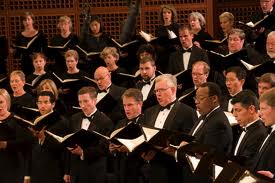 There's something enormously satisfying about experiencing impromptu art, whether it's coming across a flash mob performance in a shopping mall or shirking off an afternoon in the office to experience a matinee concert at the Symphony.
There's something enormously satisfying about experiencing impromptu art, whether it's coming across a flash mob performance in a shopping mall or shirking off an afternoon in the office to experience a matinee concert at the Symphony.I relished doing the latter yesterday when I decided at about 20 minutes notice to head around the corner to Davies Symphony Hall to hear Michael Tilson Thomas lead the SF Symphony and Chorus in a matinee performance of Mozart's Requiem. Additionally on the program were two pieces that were new to me: Lacrimosa, a melodious five minute a cappella choral work inspired by the "Lacrimosa" movement from Mozart's Requiem by the Lithuanian composer Mindaugas Urbaitis, and Morton Feldman's Rothko Chapel, a sepulchral-meditative work for chorus, solo soprano and mezzo-soprano, solo viola, percussion, timpani and celesta.
The delicious naughtiness of taking unplanned leave of my laptop for a couple of hours probably enhanced the experience as well as the stormy weather outside, but I enjoyed the program entirely. The Feldman, in particular, took me to a different place, with its blues-tinged celesta harmonies, sparse vocal and viola lines and spirit of lonely calm. I also enjoyed the Requiem. The "Lacrimosa" stood out for me, not just because of Urbaitis' quoting of it at the start of the concert. MTT took the movement at a clip, which stopped it from sounding like a dirge. But the musicians and singers managed to imbue the music, even at the faster pace, with longing, pity and regret. I was deeply moved.
In other news, I was sadly not impressed by Alison Moore's soap opera-sitcom of a black comedy at The Aurora Theatre, Collapsed. The theme about how the stresses and strains of modern life are causing the world to fall about our ears is a tired one. The metaphor of a collapsing bridge to illustrate this idea is as obvious as the inane jokes that pepper the script. Even the talented ensemble cast couldn't save Moore's play from coming across as moronic.
 There's nothing quite like a good PR manager. The best of my colleagues in public relations make my job so much easier. They inspire ideas for articles, help connect me with the people I need to speak to to do my reporting and respond to my fact-checking questions and other requests promptly and efficiently.
There's nothing quite like a good PR manager. The best of my colleagues in public relations make my job so much easier. They inspire ideas for articles, help connect me with the people I need to speak to to do my reporting and respond to my fact-checking questions and other requests promptly and efficiently.A conversation I had last night with a friend who heads up a prominent arts group in the Bay Area on the theme of publicists made me realize that there are really two kinds of publicists. One kind you want to work with, and the other, you don't.
I'm not talking about "good" PR people and "bad" PR people. Obviously there are a few incompetent boobs around who bungle even the smallest and simplest of media requests.
I'm talking about the difference between a publicist that has the best interests of their clients and the art those clients practice at heart versus those that do not. Very generally (though not always), the distinction lies between PR people who work for arts organizations and those that work for individual celebrity artists.
Because an individual artist has to have some clout and standing if not outright celebrity to have his or her own publicist (not to mention the ability to bring in quite a bit of cash to support the usual entourage of PR reps, managers, agents, fluffers etc), the people the individuals hire to meet their PR needs tend to be more focused on propagating the oversized celebrity egos of their clients and taking a defensive stance on even the tiniest details than serving the interests of the artists and the art those individuals practice. The PR people often have over-inflated egos themselves, though more often than not, they'll think of their behavior as being solely motivated by the protection of their clients' brand and work.
I bring this up because my friend, let's call her Kara, was upset last night because the publicist who works with a major artist with whom Kara's group is collaborating this spring, objected to the press release that Kara put out concerning the upcoming collaboration. Apparently the PR person thought that her client, who is a big name in the art world, should have higher billing / more prominence on the press release than Kara's group.
It's probably fair to say that Kara should have shown the press release she'd drafted to the PR person before she sent it out. The PR person was understandably cross about the lack of protocol. But a collaboration is a collaboration. The artists involved should be on equal footing, regardless of their household name status. And, as Kara told me, she's had so much trouble figuring out which of the celebrity's many aides to deal with -- and how to reach them -- that she wasn't even sure where to send the draft of the release. The communications channels were apparently confusing and opaque.
This kind of incident depresses me slightly. Journalists are used to getting the cold shoulder from celebrity PR reps. But the artists that work with those celebrities shouldn't get the same treatment. None of us should, frankly.
We're all working in service of culture. This is about art-making, people, not boosting celerity egos and putting other people down.
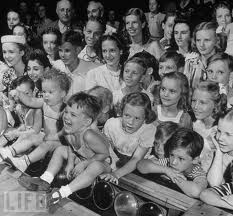 The way in which different arts events attract audiences of different age demographics occasionally strikes me as odd. It's no surprise that a gig at a club featuring several DJs, a couple of live bands, live painting displays, breakdancing demonstrations and video projections will skew younger, age-wise, than a recital of 19th century German lieder at a concert hall.
The way in which different arts events attract audiences of different age demographics occasionally strikes me as odd. It's no surprise that a gig at a club featuring several DJs, a couple of live bands, live painting displays, breakdancing demonstrations and video projections will skew younger, age-wise, than a recital of 19th century German lieder at a concert hall.But why should it be, for instance, that classical and contemporary dance performances as a whole should attract more diverse audiences including droves of younger people than classical and contemporary music events?
The reasons seem obscure to me, and yet time and time again, I find this to be the case. Is it that more young people dance than play musical instruments? I doubt it. Is dance a more approachable art form than classical music? Again, I don't think so. Or is it that dance shows are more visually stimulating than concerts? This could be a reason, I guess, though it seems slightly superficial.
I wonder also whether dance organizations just market themselves to younger people more actively than their music counterparts.
The composer John Adams has said that it doesn't matter that classical music attracts an older crowd. He thinks that classical music organizations should embrace this fact rather than constantly chafe against it and spend all of their marketing budgets on dreaming up ideas to bring in more people in their 20s and 30s.
I kind of see what Adams is saying. There's no intrinsic reason why an art form has to have a broad-based appeal, except that the bigger and more diverse audiences an organization can attract, the more likely it is to stay afloat.
Figuring out what it is about certain art forms that makes them attract a broader scope of attendee may be a good way to help arts organizations that typically attract a narrower range build audiences.
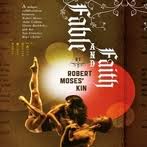 Collaborations between local youth choirs and established professional performing arts companies seem to be all the rage these days in the Bay Area, in part I'm guessing as a result of special funding opportunities for these kinds of projects. There have been several such productions in recent years, such as the San Francisco Girls Chorus' partnership with the Joe Goode Dance Company a couple of years ago and now "Fable & Faith," a dance work steeped in children's fairy tales created by the Robert Moses' Kin dance company with the involvement of the San Francisco Boys Chorus.
Collaborations between local youth choirs and established professional performing arts companies seem to be all the rage these days in the Bay Area, in part I'm guessing as a result of special funding opportunities for these kinds of projects. There have been several such productions in recent years, such as the San Francisco Girls Chorus' partnership with the Joe Goode Dance Company a couple of years ago and now "Fable & Faith," a dance work steeped in children's fairy tales created by the Robert Moses' Kin dance company with the involvement of the San Francisco Boys Chorus.I very much enjoyed last night's performance at the Yerba Buena Center for the Arts, for the combination between the salty strength of Moses' choreography, which involved angular, twitchy movements that gave the the Tale of the Pied Piper a suitably macabre aspect, and the sweetness of the children's voices.
I must admit that I was skeptical when I heard about the way in which the choir planned to sing arrangements of standard repertoire like the "Lacrymosa" from Mozart's "Requiem Mass" and the spiritual, "Motherless Child" in the piece. It sounded a little bit cheesy and I wondered why the composer Paul Carbonara who was responsible for the rest of the musical score, hadn't gone ahead and written special musical lines for the chorus. But the incorporation of this familiar material, especially as sung with the purity of boys' voices, helped to ground the more free-wheeling, experimental aspects of the production, such as Moses' choreography, Carbonara's expansive, guitar-led electronic musical score, Ian Winters' delicate video designs and Mary Domenico's gorgeously decadent costumes inspired by the 18th century European theatre.
The combination of "Fable & Faith" and "The Cinderella Project," a dance work which Robert Moses' Kin performed on the first half of the program, also provided a great balance for an evening of thoughtful dance: Both shows grapple intelligently with the relationship between parents and children. "Fable & Faith" deals with what the two groups mean for the health of a community. "The Cinderella Project" looks at the relationship in a much more intimate and personal way -- it's a dance piece about people's "right" to be parents and the struggles that many individuals undergo to have kids in the modern world.
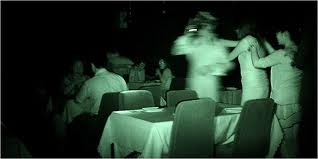 As a person who enjoys food as a hobby and writes critically about the performing arts professionally, I love culinary experiences that are also dramatic.
As a person who enjoys food as a hobby and writes critically about the performing arts professionally, I love culinary experiences that are also dramatic.I experienced one of the most theatrical meals on Monday night at Opaque, a basement restaurant in San Francisco which specializes in serving meals in the dark.
When I say dark, I mean blacker than pitch. It was so dark in the restaurant that I couldn't see my hands two inches in front of my face, let alone the table laden with crockery and cutlery, let alone my partner and the other dining guests. All I could do was put up with the fact that my eyes were useless while working my way through an ahi tuna starter, a portobello mushroom-centric main course, a chocolate cake dessert, crudities and dips, two glasses of wine and a cocktail.
Without trying to alter the way I operated I found that the lack of light piqued all my other senses in a way which I had never experienced before.
Theatre also heightens the senses. When it's good, your eyes and ears feel completely consumed by what you're seeing and hearing. When it's bad, the odor of the guy sitting next to you and the hard feel of the seat below you overpower the experience of the show.
People often talk about how "dining in the dark" restaurants (which have been around for the past few years) make the food seem even more delicious because your sense of taste is apparently heightened by the fact that you cannot see. I don't know what the scientific evidence is to support this claim, but it's true that my taste buds reacted more strongly to what I was eating and drinking than usual. This was also partly because I was consuming more slowly and carefully than usual owing to the lack of light. On several occasions, I put my hand in the butter dish and crudite dip bowls by accident.
But I was most surprised by how the experience affected my other senses beyond taste. I didn't expect my hearing to change so radically. Eating three courses and drinking wine (out of stemless glasses to prevent spillages) in sepulchral conditions made me hear conversations going on all over the room with acute sensitivity. In lit conditions, I normally tune out other talk.
And the texture of the table fixtures seemed so much more tactile, from the grain of the cloth napkin on my lap to the cold metal of my fork.
Perhaps the most dramatic aspect of an evening at Opaque is how dependent a seeing person becomes. In the world of light upstairs, blind people often rely on the seeing to get around. But in the dark, the tables are turned.
All of the serving staff at Opaque are blind. Our waitress expertly guided us to our table, served the meal perfectly and helped us to find all the things we needed throughout. Though I'm deeply glad to have the use of my eyes, it was disappointing in some ways to be led back to the light after such an intimate, heightened experience in the dark. On the other hand, I felt pretty helpless. If it hadn't been for our waitress, I'd probably still be sitting in the dark now.
P.S. When a diner drops a wallet or cellphone at Opaque and can't find their valuables at the end of the night, someone on the restaurant staff (a seeing person, I assume) dons night goggles to look for the item in the pitch. You learn something new everyday.
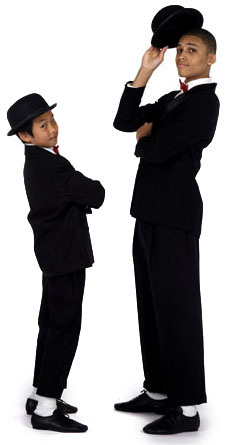 An event on Monday at a nightclub to benefit the San Francisco Arts Education Project featured a lively medley of Cole Porter love songs performed by a promising bunch of local public school students dressed in natty tuxedos and pretty black and white satin party dresses as its centerpiece.
An event on Monday at a nightclub to benefit the San Francisco Arts Education Project featured a lively medley of Cole Porter love songs performed by a promising bunch of local public school students dressed in natty tuxedos and pretty black and white satin party dresses as its centerpiece.I found the performances of romantic standards like "You're the Top" and "Let's Do It (Let's Fall in Love)" to be rather endearing. The friend who joined me for the event had reservations.
Many of the students, who are all aged between 9-15, had great projection and intonation, a winning stage demeanor and moved fluidly around the rather cramped and acoustically challenging basement space where they had been asked to perform before a crowd of mostly middle-aged supporters.
My friend found the medley of Porter songs to be a bit creepy. His reasons for being slightly weirded out by the experience centered on his aversion to 11-year-olds being taught to sing with big, brassy, vibrato-laden musical theatre voices that make them sound way beyond their tender years, as well as the sometimes-racy content of the material.
I mostly disagreed with my friend.
While a forced Broadway twang sounds strange coming from a little kid, I think on balance that it's a great thing for these children to be getting a vocal music education, whether it's in a choir or for the musical theatre stage.
Also, I wonder whether the slightly risque content of the songs actually suits children's voices quite well. Porter's lyrics seem very innocent today compared to the sorts of lyrics currently being written and sung by pop artists. The kids' voices lend the words a wistful air of purity which makes us hear Porter's tunes in a fresh way.
SFArtsEd's ensemble is in the middle of a series of performances devoted to this repertoire -- Everything Goes! The Music of Cole Porter. The show plays at the Eureka Theatre in San Francisco through February 13. Tickets can be purchased here.
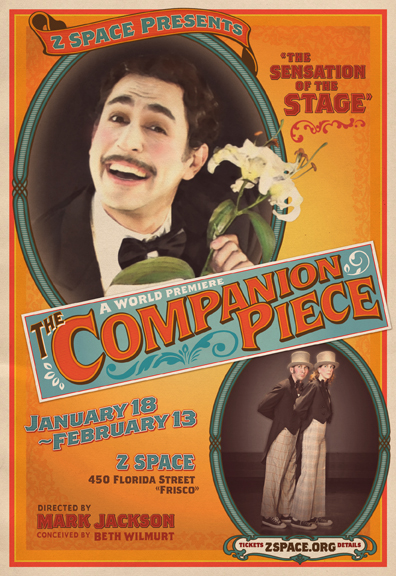 Another smashing, action-packed weekend of cultural mayhem in San Francisco. Forthwith, some brief impressions of various experiences, both the entrancing and not-so-entrancing...
Another smashing, action-packed weekend of cultural mayhem in San Francisco. Forthwith, some brief impressions of various experiences, both the entrancing and not-so-entrancing...1. The Companion Piece at Z Space : Director Mark Jackson, and performers Beth Wilmurt, Chris Kuckenbaker and Jake Rodriguez are among the most captivating theatre artists in the Bay Area. This world premiere devised theatre production is hilarious, physically exhilarating (the actors probably burn off a thousand calories apiece doing everything from tap-dancing to shifting furniture to gnashing their teeth like Victorian fairground automata) and in places deeply moving. There is no plot as such. The production, which explores the love-hate-inducing push-pull inherent in both human relationships and the theatre-making process begins and ends in the same fashion - with a solo monologue by Rodriguez in the guise of a 19th century Vaudevillian. The middle hour of the action centers on a bunch of technically amazing comedic "bits" by double-act Wilmurt and Kuckenbaker. The production works best when it moves fast and stays focused on the tension between the theatricality and competing desires of the comedians. Where it falls flat is towards the end, when things take a low and serious turn. An overly-long "ballet" involving a couple of theatrical step-ladders is the chief cause of the problem. But The Companion Piece is in many ways vital and inspiring and totally worth seeing. The show is only on for one more weekend. I strongly advise anyone who's within driving distance of the Bay Area to see this show. The performers have not been getting as good audiences as they should, which surprises me immensely: Usually any production involving Jackson and Wilmurt comes close to selling out if not sells out entirely. And this is one of the duo's finest collaborations to date.
2. Program 2 at The San Francisco Ballet: The mixed program looked promising with its two classical repertoire standards -- Sir Frederick Ashton's Symphonic Variations and George Balanchine's Symphony in C -- bookending Yuri Possokhov's new world premiere, RAkU, based on Japanese themes. All three pieces on the program are linked by the post-war years: Ashton and Balanchine's ballets were created in 1946 and 1947 respectively, and RAkU deals with the burning of Kyoto's Golden Pavilion in 1950. The contrast between the two quite similar abstract works created to show-off dancers' perfect lines and test their stamina and Possokhov's dramatic narrative ballet made for a tidy, A-B-A structure to the evening. But beyond that, I found the programming to be mostly unsatisfying. Ashton's steps came over as fussy and mincing; at the start one or two of the dancers seemed to be experiencing technical difficulties (also known as "the wobbles") and could not keep the requisite glassy poise to make the dance feel as seamless and perfect as it should. Balanchine's piece was the most lively of the three on the program. The dancers looked like they were floating on air. When the entire cast was on stage at the end of the piece, I felt as if I were watching a thousand human forms refracted in dozens of mirrors or the panels of a perfectly-cut diamond. For me, the weakest part of the program was RAkU. The piece came across as "Asiatic drag" with its flapping kimonos, Japanese instrument-flecked musical score (by SF Ballet bassist Shinji Eshima), and choreography which seemed to my mind to evoke Japanese Zen traditions in the most superficial way. It also struck me that the piece bore too much of a resemblance to John Neumeier's The Little Mermaid, created for SF Ballet's 2010 season, which also draws on Asian themes and makes use of the talents of the company's most ethereal and waif-like ballerina, Yuan Yuan Tan. "All I could think of as I watched the piece was that she should eat a sandwich once in a while," said my friend Nori during intermission after witnessing the tiny dancer die a tragic lover's death in RAkU.
3. Hot Air Festival at the San Francisco Conservatory of Music: I managed to catch only the first hour of this second annual festival devoted to performances of music written in the last 50 years, but I'm glad at least to have had a glimpse of the event. The festival, which went from 2-10pm, featured a plethora of performances of pieces by well-known and established composers as well students. An amplified cello piece by Michael Gordon, Industry, almost gave me a migraine with its interminable scrapings. The work did sound like heavy machinery, so I guess the title is a good one. But it was stultifyingly dull and exhausting to listen to. Things improved radically, however, with a lively performance of Lou Harrison's Concerto for Violin and Percussion Orchestra. The piece is 50 years old today, and the SF Conservatory musicians (including a charismatic student, Kevin Rogers, on violin) gave a great deal of resonance to Harrison's arcing arpeggio string melody and mellifluous, Eastern-tinged percussion. The piece was also great fun to watch. Percussionists Doug Chin, Kevin Schlossman, Zachary Singer, Jacob Steuer and Kevin Villalta moved seamlessly between a variety of instruments including crotales, bass drums and found instruments like flower pots and tin bath-tubs. The last piece I heard before I had to leave was the second movement from Osvaldo Golijov's Dreams and Prayers of Isaac the Blind. The Classical Revolution String Quartet and clarinetist Morgan Nilsen played voraciously, bringing extreme excitement to the Klezmer-infused harmonies and spiraling melodic lines. I was completely swept away by the sense of ensemble and gusto of the musicianship.
Magnificat Baroque Ensemble's Donne Virtuose program at St. Luke's Church: A knock-out program of works by 17th century women composers featuring the ardent, beveled singing voice of Jennifer Ellis Kampani, whom I am beginning to adore almost as much as Lorraine Hunt Lieberson, my favorite vocalist of all time. The musicians, led by the group's artistic director, Warren Stewart, all looked like they were having a blast while playing. The music was varied and rich, involving everything from a heartfelt sacred song ("Volo Jesum") by Isabella Leonarda to La Passage de la Mer Rouge, a colorful and dramatic cantata by Elisabeth Jacquet de la Guerre, to gorgeous secular pieces by Francesca Caccini and Barbara Strozzi. A few weeks ago, Warren appeared on VoiceBox, my weekly public radio show all about singing and vocal music, to talk about this repertoire. I fell in love with it then and am completely obsessed now.
 The Contemporary Jewish Museum in San Francisco was packed to the knishes for an event celebrating the life of Johnny Mathis last night.
The Contemporary Jewish Museum in San Francisco was packed to the knishes for an event celebrating the life of Johnny Mathis last night.The singer was on top form, looking spry at 75 and full of gentle tales of his youth in San Francisco.
I loved the event most for the tidbits I learned from Mathis about the Fillmore district in the 40s and 50s and the partially-lost art (as he sees it) of singing a great love song. Singers today don't put enough emphasis on the lyrics, Mathis says, and they over-emote instead of letting the music speak for itself.
But I wish we could have heard more of Mathis' music beyond the abrupt ten seconds of his version of "Kol Nidre" that was piped over the speakers. It would have seemed less rude to play at least that one three minute song in its entirety. But apparently everyone was too busy gushing over the guest of honor to spare the time to listen to any of his music collectively.
Time could easily have been spared however: I, for one, could have done without the inane superfluities of the trio of gormless panelists (the vinyl-sniffing core members of The Idelsohn Society, a organization geared towards the preservation of long lost Jewish music) who all came across like characters in a Nick Hornby novel.
 Clybourne Park, Bruce Norris' drama about race, community, urban development and the language we use to define - or avoid having to define - all three of these concepts is having its west coast premiere at the American Conservatory Theater right now.
Clybourne Park, Bruce Norris' drama about race, community, urban development and the language we use to define - or avoid having to define - all three of these concepts is having its west coast premiere at the American Conservatory Theater right now.The best thing about Jonathan Moscone's pretty fluid and well-acted production is the reaction from the audience.
To elicit any kind of reaction from an ACT audience is a feat in itself. It's not unusual to see patrons snoring their way through the company's frequently dull shows.
But Norris' drama is geared precisely towards pushing the buttons of the politically-correct, middle-class, white theatre-going audience, and boy do they take the bait.
Every time a character in the play, which charts the development of an urban neighborhood over a span of about 60 years, said anything even slightly racist during last night's performance -- or that could be interpreted as such -- people in the audience let out shocked whoops or sarcastic cackles.
It was great to see an audience -- especially this particular audience -- reacting so viscerally to a stage production.
On the other hand, it's easy for a playwright to get this kind of feedback from a crowd. Racism is such a hot-button topic and people are so very politically-correct in the Bay Area, that a playwright hardly has to work to raise shackles. Danny Hoch achieved similar results with his show about urban planning and race (Taking Over) at Berkeley Rep several years ago, for instance.
I'd like to see a playwright achieve the same level of provocation with a subject that isn't race-related.
In any case, the show is worth seeing. It runs through February 20.
 I attended what I thought was going to be a "crossover" concert last night: A performance at Yoshi's jazz club by Simone Dinnerstein, a classical pianist best known for her crystal clean yet emotionally deep interpretations of J S Bach's music, and Tift Merritt, a rock musician and singer-songwriter in the tradition of Tom Waits and Joni Mitchell.
I attended what I thought was going to be a "crossover" concert last night: A performance at Yoshi's jazz club by Simone Dinnerstein, a classical pianist best known for her crystal clean yet emotionally deep interpretations of J S Bach's music, and Tift Merritt, a rock musician and singer-songwriter in the tradition of Tom Waits and Joni Mitchell.Some of the concert -- the least compelling parts of it -- did indeed go into crossover terrain with Dinnerstein performing Daniel Felsenfeld's dense but ultimately tedious variations on the Leonard Cohen song "Suzanne" and Merritt performing truly tuneless renditions of Faure's art song "Apres un Reve" and - worst of all - "Dido's Lament" from Purcell's Dido and Aeneas.
Where the experience scored high marks for me was in the duo's attempt to find a middle ground between the worlds of classical and rock music. Merritt and Dinnerstein made beautiful music together when they played three works that they had commissioned from composers specially for their collaborative project -- Brad Mehldau, Patty Griffin and Stephen Lasser. The Lasser piece in particular was absolutely gorgeous, with careening piano lines that provided Dinnerstein with the perfect canvas to show off her technical and soulful musicianship and unexpected harmonies that gave an edge to Merritt's ambling, cutesy voice.
I realized while listening that the three composers had caught the essence of collaboration for these two very different artists. Instead of focusing on "crossover" projects, more artists should consider working in this way. It's less about showing how an artist can successfully or not so successfully transition into a genre with which they are less familiar (a feat, which even when well executed, often comes off as being gimmicky) and more about encouraging people from disparate traditions to meet at a musically-enriching crossroads.
